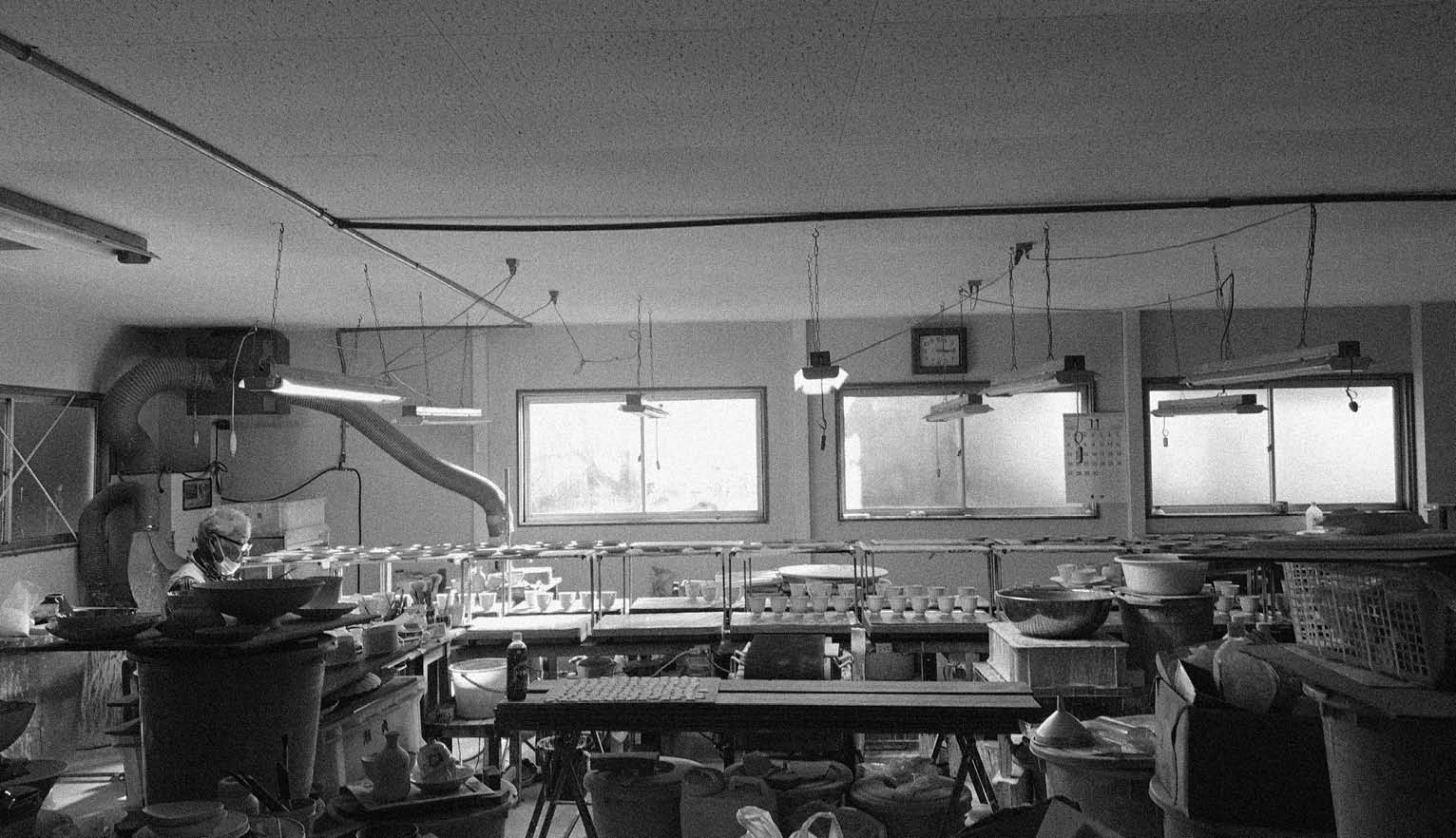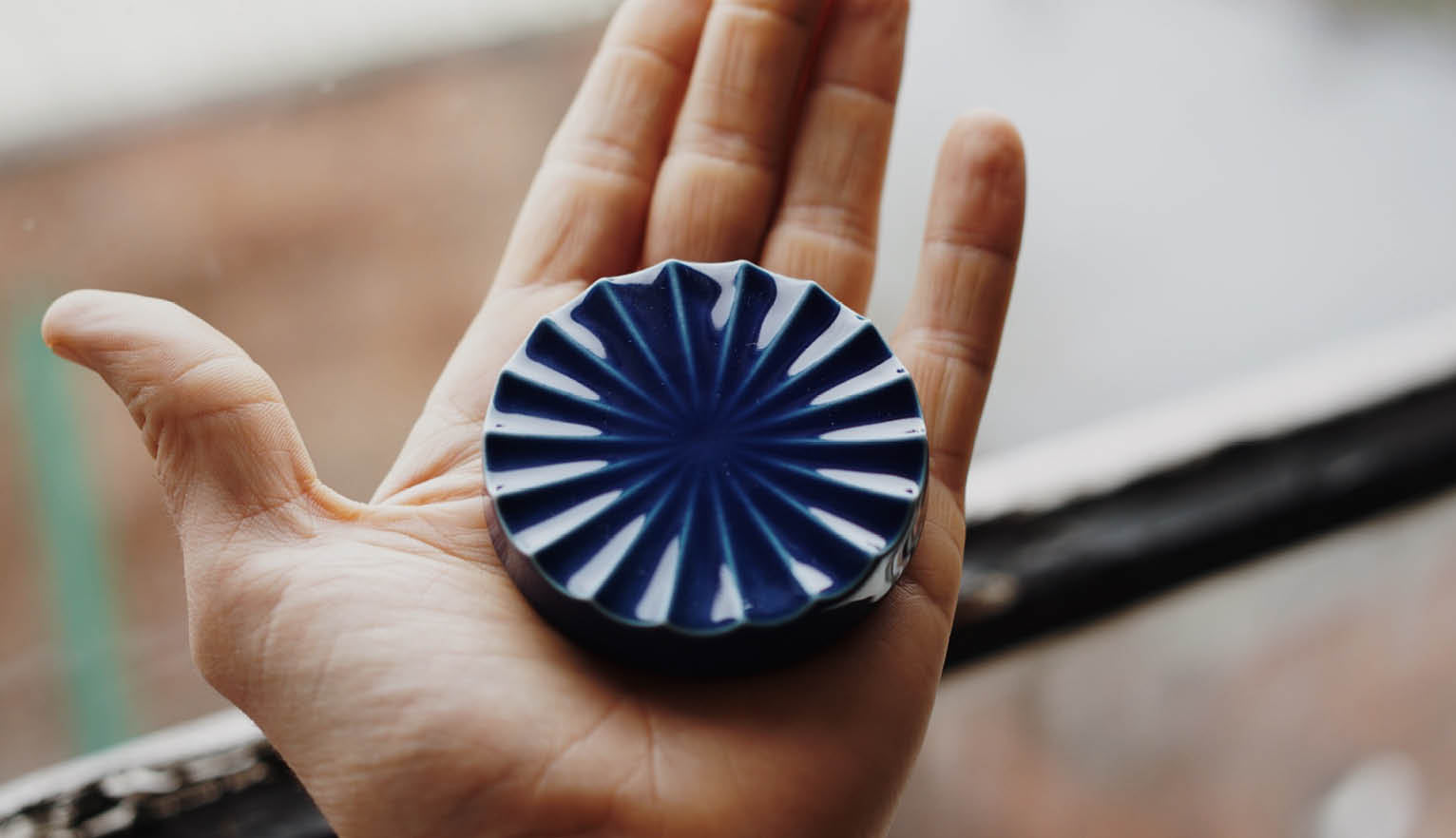Japan | Imari collection
In 2019, our journey to Japan led us to a remarkable encounter with one of the oldest pottery traditions in the country. Nestled amidst the protective embrace of mountains, Okawachiyama, is often referred to as the "Villages of the Secret Kilns.
The illustrious history of ceramics in Okawachiyama traces back to the time when shoguns established kilns in this region, primarily crafting pottery for their exclusive use. This secluded location, hemmed in by mountains on three sides, was a conscious choice, allowing them to maintain absolute control over production. Skilled artisans, well-compensated but confined to the valley, played an essential role in this legacy.
Today, while artisans enjoy more freedom of movement, their dedication to their craft remains a testament to the region's heritage.
Creating the exquisite Imari ware in our collection involves a meticulous process for this collection we have used two different processes. These are the main steps involved in the making of our crown rest:
How we made the crown rest:
- Design development: In our studio we begin with Pen and paper exploring forms and ideas, quickly modelling and testing ideas using wood, foam and plasticine.
- Additive and 3D: Transforming our sketching into digital 3D designs we rapidly iterate and refine dimensions and forms. Using additive manufacturing we print and model these ideas and use the physical models to test out our ideas.
- Mould Creation: The 3D data is sent to Japan where models are locally printed and sent to the Pottery for mould making. A two-part plaster mould is made directly from the 3D forms and there is a positive and negative element produced. This solid mould gives a high degree of accuracy. .
- Filling the moulds: The moulds are carefully filled with a slip. This slurry is poured into the mould then then left to dry. .
- Removal from the mould: Once dry the pieces are removed from the mould and inspected and the process is repeated to create multiple copies. The pieces are then left to dry further ready for firing..
- Kiln Firing: The Crown rests are fired in kilns at temperatures ranging from 850 to 900 degrees.
- Glazing: Each piece receives a coating of deep and iconic indigo or matte white glazes with the additional speckles added using various hand techniques.
- High-Temperature Kiln Firing: The pieces undergo a second round of kiln firing, reaching scorching temperatures of 1300 degrees Celsius.
- Inspection and Shipping: The final products are thoroughly inspected and then shipped to our studio in Manchester, UK.
How we made the pen pot:
For our pen pot, the production process is all carried out by hand, resulting in subtle variations between each piece
- Design and development: We develop our forms as per the crown rest and model our designs to find the shape and design we are looking for.
- Additive and 3D: we refine the designs in CAD and test by printing models in 3D. These are then sent to the pottery as master samples for the potters to replicate.
- Potter's Wheel on the top side: Pieces of clay are deftly shaped using a potter's wheel. Each piece is formed by hand to create the hollow form. .
- Potter’s wheel the foot: The Pen Pot is then turned over and the foot or Kodai’ is carved and shaped. .
- Oven Drying: The Pen Pots then undergo oven-drying to eliminate all remaining moisture in preparation for firing.
- Kiln Firing: Like the crown rest, the pen pot cups are fired in kilns at temperatures between 850 and 900 degrees.
- Glazing: Each piece receives a coating of deep and iconic indigo or matte white glazes with the additional speckles added using various hand techniques.
- High-Temperature Kiln Firing: The pieces undergo a second round of kiln firing, reaching scorching temperatures of 1300 degrees Celsius.
- Inspection and Shipping: The final products are thoroughly inspected and then shipped to our studio in Manchester, UK.






